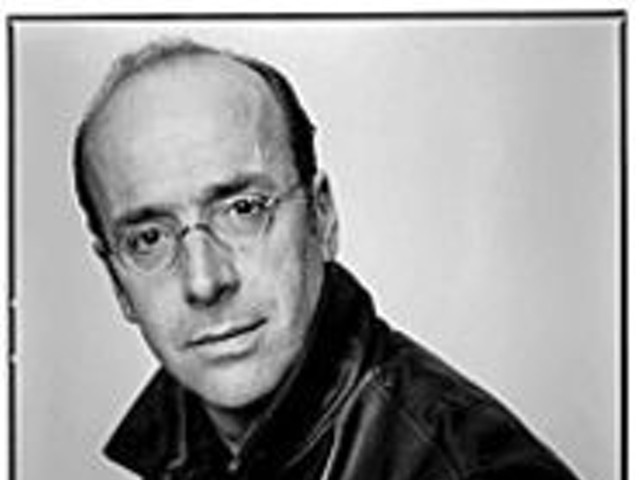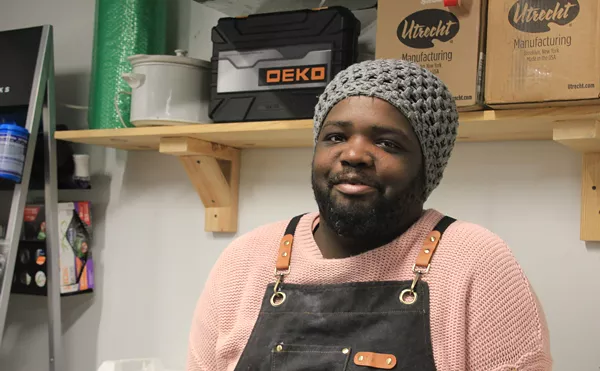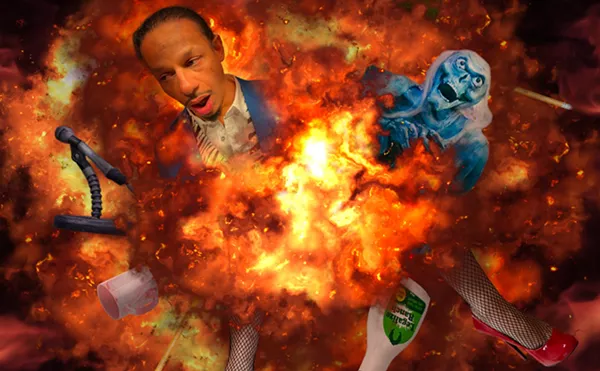If you've heard of Fort Gondo at all, it's likely that you've heard the sensational stories: that it's an alternative performance space, an underground scene for the city's hippest art students, gaining its cool credentials from the ragged edginess of the rough neighborhood. That describes an aspect of the place. But Fort Gondo is more than an art scene. Gondolfi prefers to think of it as a "community action center," a constantly evolving set of efforts to engage people -- residents and non-residents -- in a forward momentum of community progress. With Fort Gondo, Gondolfi is building an unorthodox paradigm for urban improvement.
City leaders could well take heed.
Gondolfi knows all about the standard American approaches to urban renewal -- those "enhancements" that generally don't work. He did his graduate work at the University of Illinois in Urban Regional Planning and spent time in Boston involved in community-reinvestment efforts, reinvigorating neighborhoods on downward slides. During that time he made an extended visit to St. Louis. "I loved the city immediately," he says of his 1998 visit. "The Arch and the built environment -- I was awed by it visually." He was also taken by the opportunities the city offered -- namely cheap real estate, a certain degree of inertia and chances to turn things around.
He returned to St. Louis in 2001 and purchased the storefront building at 3151 Cherokee Street near Compton Avenue, intending to establish a shelter for dogs. But very gradually the plans shifted. Gondolfi befriended Bevin Fahey-Vornberg, David Early and Michael Schuh, neighbors who were involved in Fort Gondo's very first art event: an opening for the Untitled Arts Collective in February 2002. Hundreds of visitors turned up, and Fort Gondo's reputation as an alternative art scene was established. With Gondolfi's acquisition of Art Parts, a former auto supply store, and Radio Cherokee, a bar/music venue, farther up Cherokee Street, he established what he fondly calls "110 yards of chaos."
There have been scenes of chaos at Fort Gondo, strange performances to rival early Dada experiments or Chris Burden's body-art stunts of the 1970s. There was the now-infamous martyr showdown, in which Schuh and Gondolfi engaged in a battle of the wills, each hanging from a crucifix. Schuh and Gondolfi dressed up like furry animals for "F," an Art Parts show in which they served audience members pieces of fruit. And there were Gondolfi's solo performances, one in which he crammed himself into a doghouse in the yard behind Fort Gondo and stayed there until he spilled his bowl of water.
But most events were less absurd. Radio Cherokee has hosted dozens of bands, local and out-of-town acts, to wide underground acclaim. Readings and film showings regularly occur at Fort Gondo, including a recent appearance by David Rees, author of the satiric comic series Get Your War On. And installation artist Jessica Bronson, a visiting artist at Washington University in 2002, was so taken with Fort Gondo that she organized separate all-media art exhibitions in the space for four master's-degree students. Since those events, Fort Gondo has become a staple venue for student artists to show their work. In particular, students from Wash. U. and Southern Illinois University Edwardsville have taken to the place -- it's cheap to rent, with a do-it-yourself, anything-goes atmosphere that's practically tailored to their needs.
But the 34-year-old Gondolfi reminds anyone who'll listen that Fort Gondo wasn't intended to be an art gallery. He acknowledges its growing reputation as such but refuses to let it become "just an urban outpost for white art students to use." Instead, Gondolfi considers Fort Gondo a community action center, with art being just one of the catalysts he employs for neighborhood engagement. Michael Schuh, Gondolfi's early collaborator, believes that "for Galen, it's about bringing people down [to the neighborhood], and about being a resource for various groups. After the first show, he realized that just by creating interest in the place, it was benefiting the community."
Gondolfi is particularly interested in involving kids in art, to give them a sense of investment in both Fort Gondo and their own neighborhood. In 2002, along with Bevin Fahey-Vornberg, a neighbor and teacher, he organized ArtReach. Artists donate their time running workshops with kids, whose art is then on display in the storefront. The program is sporadically funded by grants they manage to secure for art supplies. Fahey-Vornberg calls it "a way of turning a negative into a positive," taking kids who knew little about art and using it to help them identify with their neighborhood. "Now they know about Fort Gondo, and they come by and ask, 'When's the next art class?'"
One of Gondolfi's favorite recent efforts was an enormous exhibition of art that kids had produced in three earlier Fort Gondo workshops, arranged around the themes of "family," "neighborhood" and "city." The workshops and the exhibition were funded through a Team St. Louis grant awarded to the South Side Day Nursery, which also hosted the exhibition in its spacious second-story loft around the corner from Fort Gondo. The show's opening coincided with Cinco de Mayo festivities, which made for an exuberant atmosphere. Gondolfi beams as he describes the kids, proud to see their works displayed in a space that he considers "one of the most architecturally significant in the city of St. Louis."
Now that Fort Gondo has gained a certain amount of momentum, Gondolfi is confident about the future. Last year he was elected president of the Benton Park West Neighborhood Association, and he wants to continue to use Fort Gondo to attract attention to (and encourage engagement with) the neighborhood. Fort Gondo's concert and exhibition calendar is filling up fast, but Gondolfi continues to speculate about new ventures. He'd like to acquire another building and open Beverly, an all-women's art gallery named after his mother. And he might organize a drive-in movie weekend in the parking lot of Art Parts. "It would be a proletarian response to the suburban metroplex. We could call it the Cherokee Cineplex!" he says. Just talking about it, he gets visibly excited. What movies would he show? "I have no idea!" he responds gleefully.
Though Gondolfi identifies himself as "curator/proprietor/ringleader" of Fort Gondo, he is loath to take credit for the achievements he's made. His business card also lists Hank, Lilly and Lester (his three dogs) as Fort Gondo's "CEO," CFO" and "Court Jester," respectively. And he constantly refers to his collaborators as the "real reasons" anything gets accomplished.
"He gives credit to everyone else," says Fahey-Vornberg. "But it's just, when you're around him, you feel like you can make it happen -- and it does."





